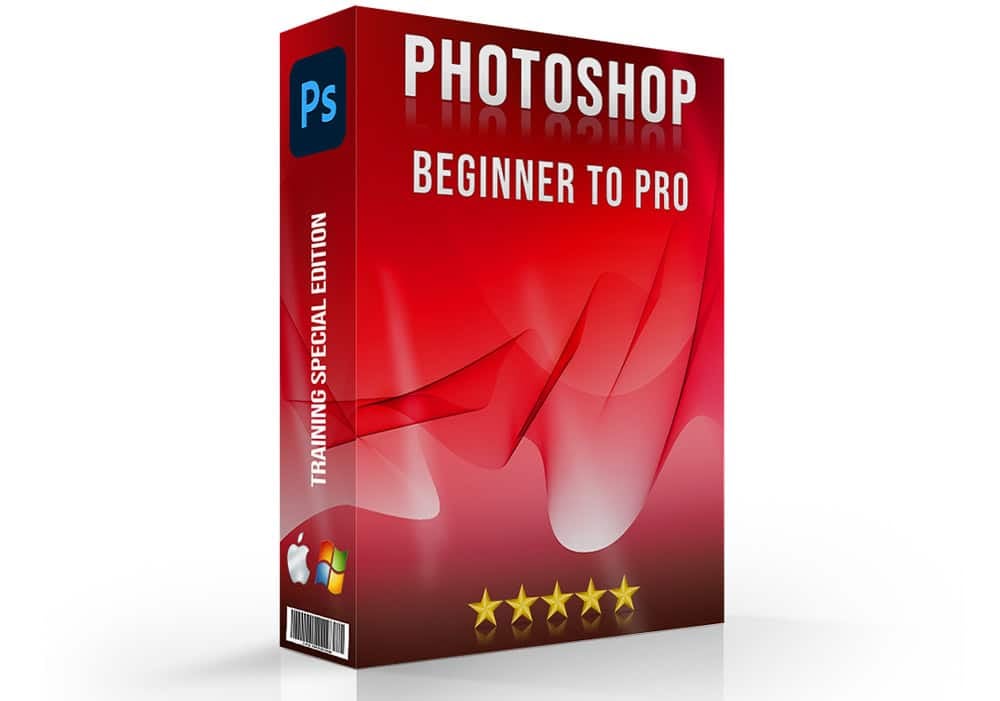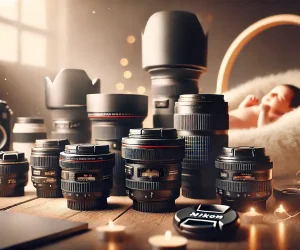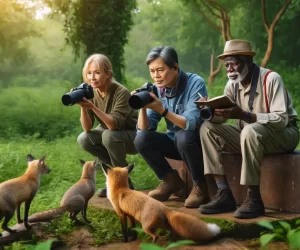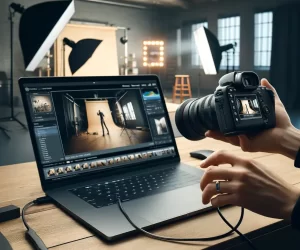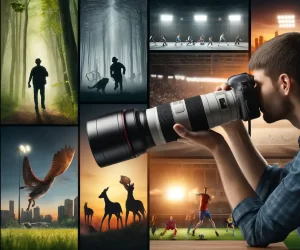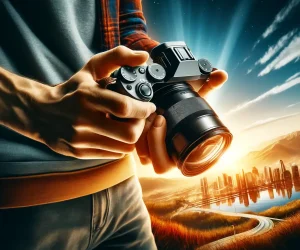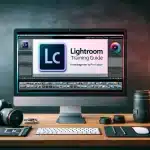
Introduction to Choosing the Best Camera
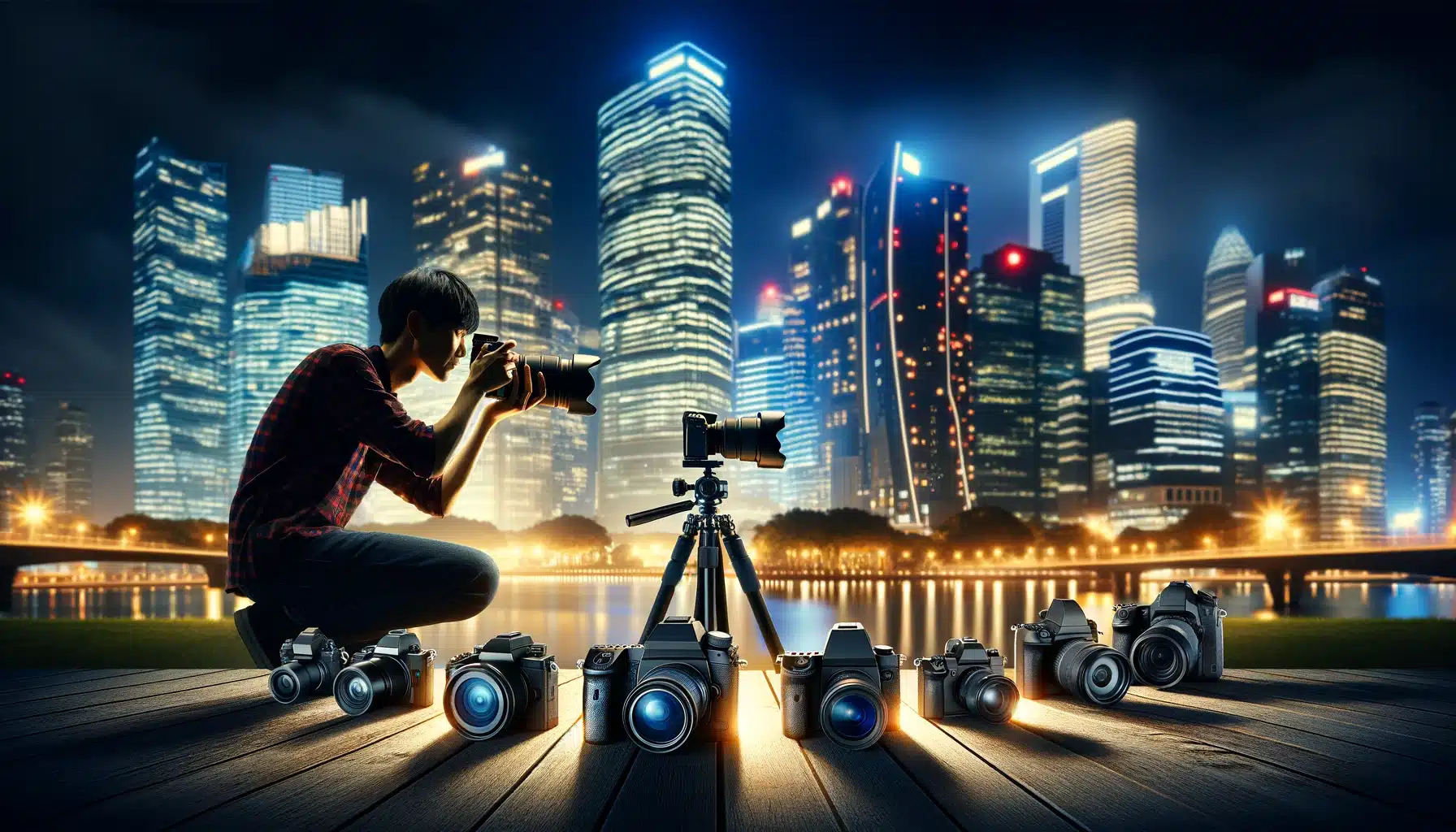
Table of Contents
Factors to Consider for Best Camera Options
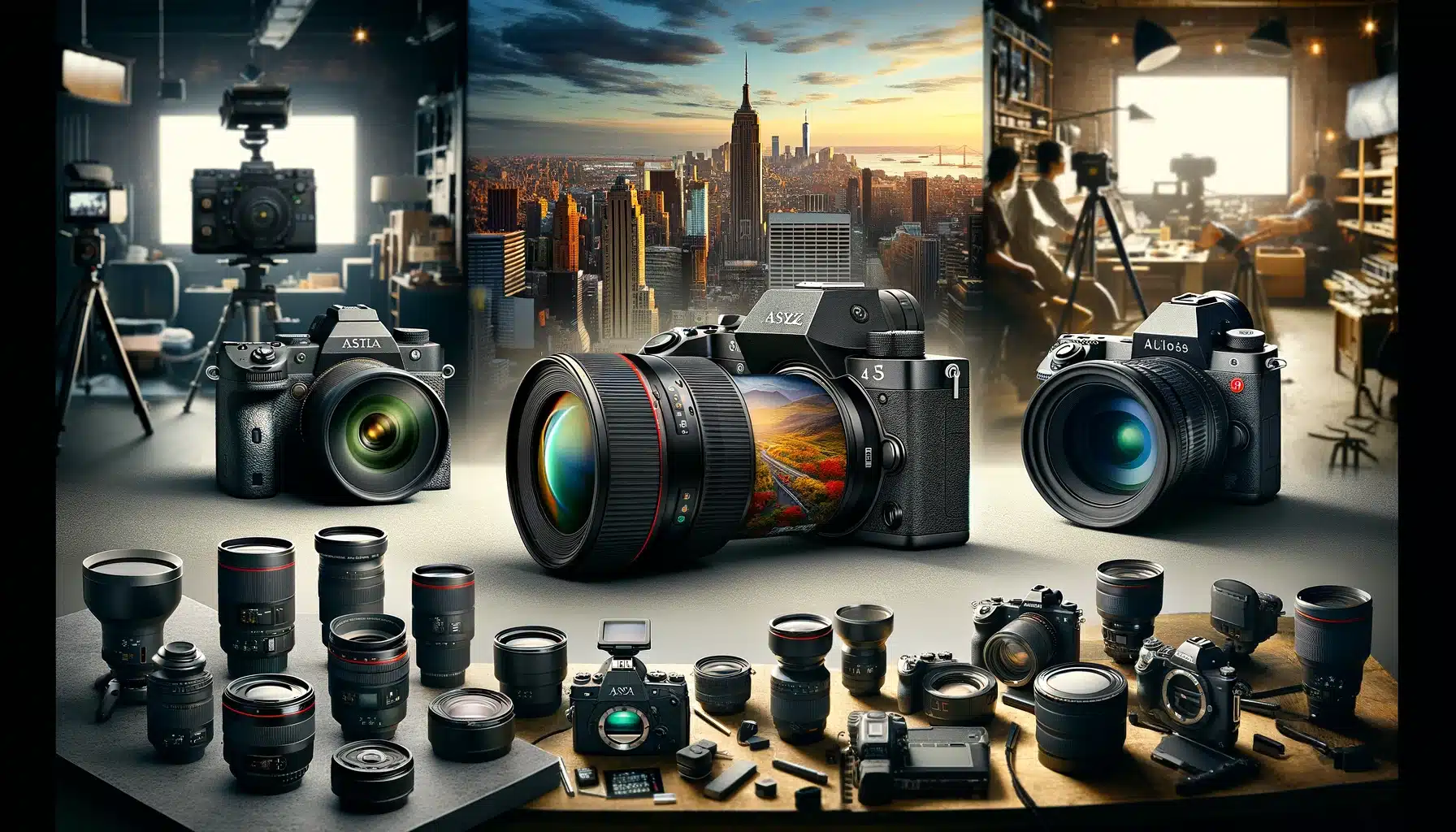
Embarking on your photography journey involves choosing the perfect equipment to bring your vision to life. Selecting the ideal camera involves weighing various factors that align with your photography goals. Let’s delve into the key considerations when determining the top-rated camera selection.
Performance and Versatility
When assessing which camera is the best for photography, consider its performance capabilities and versatility. As it can help you do a better job with great efficiency in your career.
For example, if you’re a wildlife photographer, a camera with fast autofocus and higher burst rates can help you capture fleeting moments with precision and clarity.
Image Quality and Resolution
The primary goal of any photography enthusiast is to capture stunning images with clarity and detail. Evaluating which camera offers superior class image and resolution ensures that your photos stand out with sharpness and vibrant colors, enhancing the overall visual impact of your work.
Features for Optimal Camera Selection
Explore the array of features and functionalities that each camera offers, such as built-in filters, customizable settings, and advanced shooting modes. These elements contribute to enhancing your creative capabilities and streamlining your workflow, making it easier to achieve the desired results.
Portability and Size
Size and ease of carrying that optic is a matter of concern for many people. Depending on your photography style and preferences, the size and portability of a camera can significantly impact your shooting experience.
For instance, if you’re a travel photographer, a small and lightweight camera allows you to capture stunning landscapes and moments on the go without compromising quality.
Which Camera is the Best for Budget and Affordability
Your budget plays a crucial role in determining which brand optic suits your requirements. While high-end models offer cutting-edge features and superior execution, there are also budget-friendly options that provide excellent value without compromising on quality.
For example, the Sony A6000 series offers impressive features at a competitive price point, making it a popular choice among photographers seeking quality on a budget.
Note: Don’t forget to check an online review about the camera that you’re going to buy. People test different types of phones and cameras and share their honest review. It is important to get a better insight into the product.
Top-Rated Camera Selection of All Time
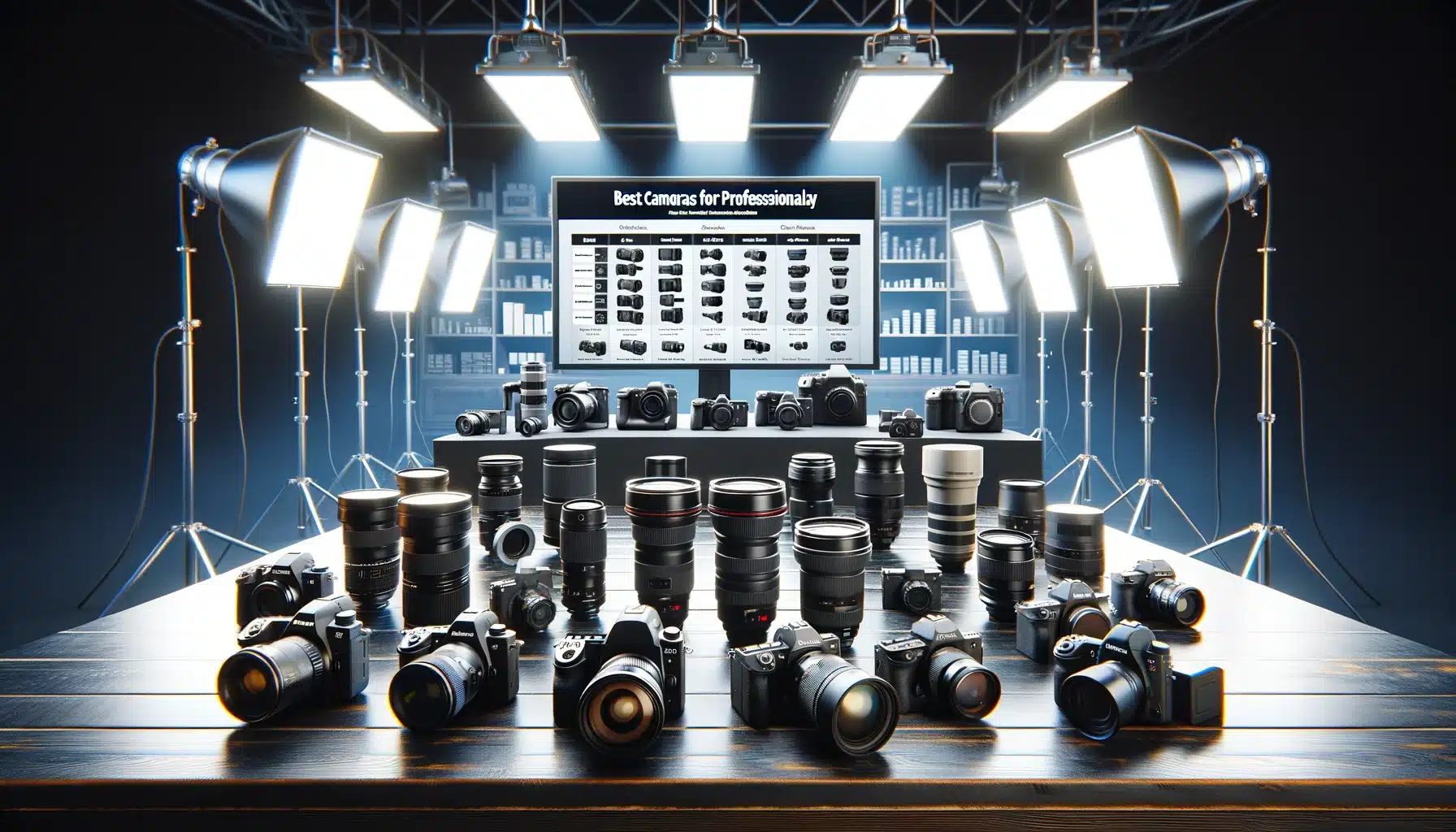
Let’s uncover the stories behind these legendary cameras that continue to inspire and innovate in the world of photography.
1. Leica M Series
The Leica M series holds a special place in the hearts of photographers as one of the top contenders for the title of which camera is the best created. Known for its precision engineering and exceptional optics, the Leica M series has been a favorite among street photographers, documentary filmmakers, and photojournalists for decades. Its rangefinder design and manual focus system offer a unique shooting experience that emphasizes craftsmanship and creativity.
2. Nikon F Series
The Nikon F series is synonymous with reliability, durability, and innovation. It revolutionized the photography industry with features like interchangeable lenses, through-the-lens (TTL) metering, and rugged construction. Photographers around the world consider the Nikon F series as a strong contender for the question of which camera is the best. Its ability to withstand challenging environments makes it a trusted companion for professionals.
3. Canon EOS-1 Series
Canon’s EOS-1 series has set the standard for professional-grade cameras since its introduction. Renowned for its cutting-edge technology and ergonomic design, the EOS-1 series continues to be a top choice among photographers seeking the best camera for capturing stunning images in diverse shooting scenarios. Its autofocus system, fast continuous shooting capabilities, and robust build make it a powerhouse in the filming world.
4. Sony Alpha Series
In the digital era, Sony’s Alpha series has made significant strides in redefining photography with mirrorless technology. The Alpha series offers a perfect blend of compactness, speed, and picture standard, making it a favorite among photographers looking for the best camera for both stills and video. With advanced features like real-time eye autofocus, impressive sensors, and excellent low-light performance, Sony Alpha cameras continue to push the boundaries of creativity and innovation.
5. Fujifilm X Series
Fujifilm’s X series combines retro aesthetics with modern functionality, appealing to photographers who appreciate both style and substance. The X series cameras are known for their film simulations, exceptional color rendering, and tactile controls, making them a top choice among enthusiasts and professionals alike. With a range of lenses and versatile shooting modes, Fujifilm X series cameras offer photographers the tools they need to express their artistic vision and create stunning imagery.
| Camera Model | Sensor Type | Max Resolution | Autofocus System | ISO Range | Video Capabilities |
|---|---|---|---|---|---|
| Leica M Series | Full-frame | 24 MP | Manual focus | 100-50,000 | Full HD video recording |
| Nikon F Series | Full-frame | 45 MP | Phase detection | 64-25,600 | 4K UHD video recording |
| Canon EOS-1 Series | Full-frame | 30 MP | Dual Pixel CMOS AF | 100-32,000 | 4K UHD video recording |
| Sony Alpha Series | Full-frame | 42 MP | Fast Hybrid AF | 100-32,000 | 4K UHD video recording |
| Fujifilm X Series | APS-C | 26 MP | Intelligent hybrid AF | 200-12,800 | 4K UHD video recording |
Which Camera is the Best for Youtubers?
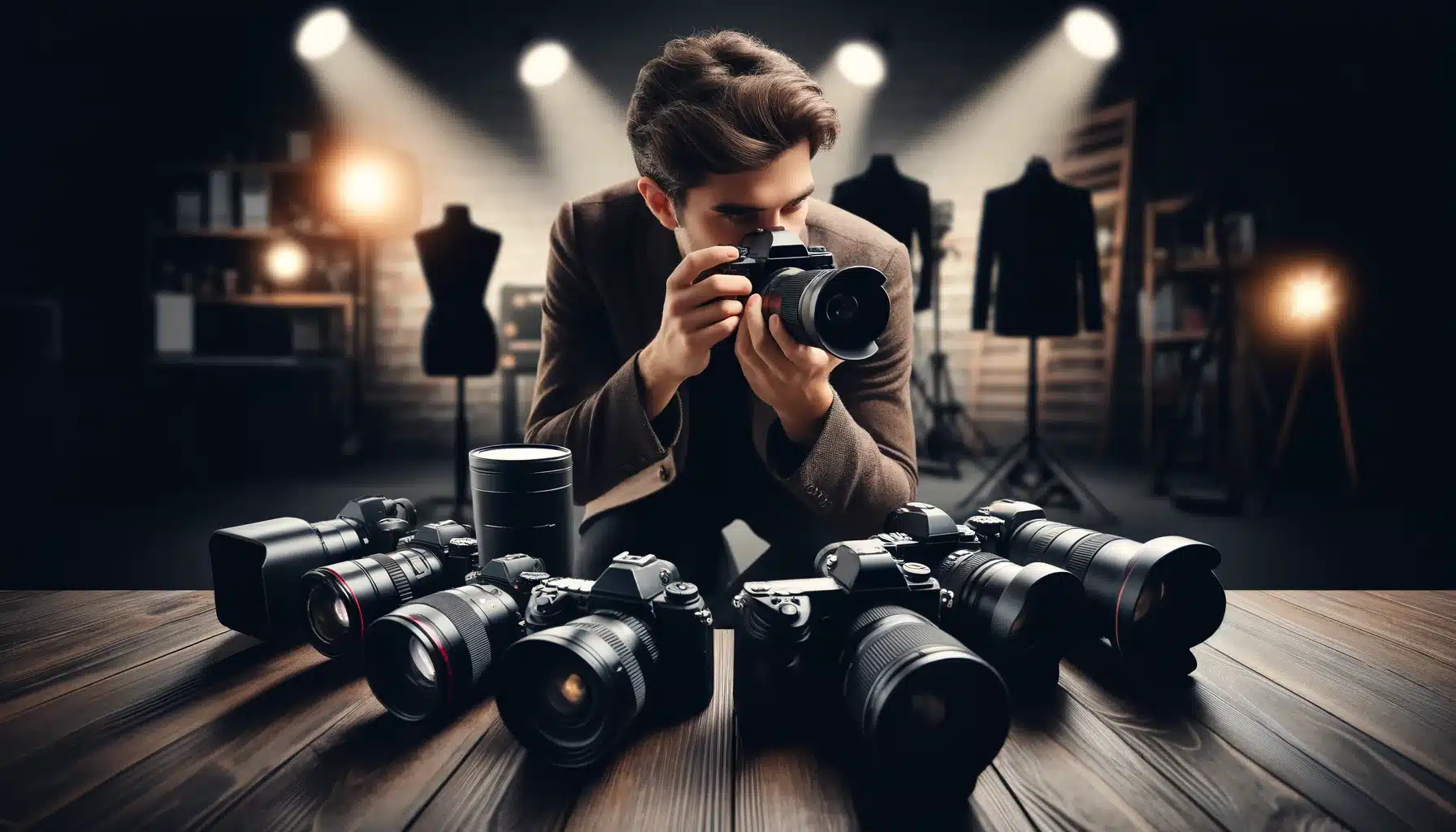
Optimal camera selection for YouTube videos is crucial for YouTubers to create captivating and engaging content. Let’s explore the lenses that YouTubers prefer and why they are considered excellent choices for creating YouTube videos.
Importance of Choosing the Best Camera for YouTube Videos
Choosing the right camera is vital for YouTubers as it directly impacts the quality and appeal of their videos. A top-notch camera enhances video clarity, colors, and details, creating a more professional and visually appealing experience for viewers.
Factors Influencing Top-Rated Camera Selection for YouTube
Several factors influence YouTubers’ camera choices:
- Video Quality: The best camera for YouTube videos should offer exceptional video quality, such as 4K resolution, to deliver sharp and detailed visuals that captivate viewers.
- Autofocus and Stabilization: Smooth autofocus and effective stabilization are crucial for maintaining sharp focus and reducing camera shake, especially during dynamic shots or vlogging scenarios.
- Low-Light Performance: Cameras with excellent dim light performance ensure clear and well-exposed videos even in challenging lighting conditions.
- Audio Input: The ability to connect external microphones for improved audio quality is essential for clear and crisp sound in videos.
Which Camera is the Best for YouTubers
This is the list of best cameras preferred by YouTubers for creating captivating YouTube content:
- Canon EOS M50: This camera is widely favored by YouTubers for its excellent autofocus, flip-out screen, compact size, and impressive video quality, making Canon EOS M50 ideal for vlogging and various content creation purposes.
- Sony A6400: Known for its fast autofocus, 4K video recording capabilities, and exceptional low-light performance, the Sony A6400 is a popular choice among YouTubers seeking reliability and professional-level video output.
- Panasonic Lumix GH5: Renowned for its superb video quality, 4K recording at higher frame rates, features like V-Log, and durable build, the Panasonic Lumix GH5 is highly regarded by YouTubers for its all-round and reliability.
- Canon EOS R10: The Canon EOS R10 is a powerhouse when it comes to detecting subjects, from people and animals (including not just cats and dogs, but also birds and various other animals). Its autofocus system covers the entire frame, ensuring reliable tracking across different AF modes and a wide sensitivity range from -4 EV to 20 EV.
- The EOS R10 impresses with its ability to shoot at up to 15 frames per second using the mechanical shutter, or a remarkable 23 frames per second with the electronic shutter. The buffer is generous, holding up to 29 raw files or 460 JPEGs at 15 frames per second, although this decreases to 21 raw files when shooting at 23 frames per second.
- Nikon Z f: Nikon Z f, is a camera that blends retro charm with cutting-edge technology. Its design, reminiscent of the classic Nikon FM2 vintage SLR, is a visual delight that stands out among its peers.
- Equipped with a new processor, an enhanced autofocus system, and Nikon's most effective in-body image stabilization (IBIS), this camera delivers exceptional performance. While it is user-friendly to photographers with dedicated shutter speed and ISO dials, the Nikon Z f surprises with its prowess in videography.
- Capture stunning 4k 60 fps videos with internal 10-bit recording capabilities, showcasing its versatility as a top-notch video camera alongside its photography prowess.
Which Camera is the best for Wildlife Photography?
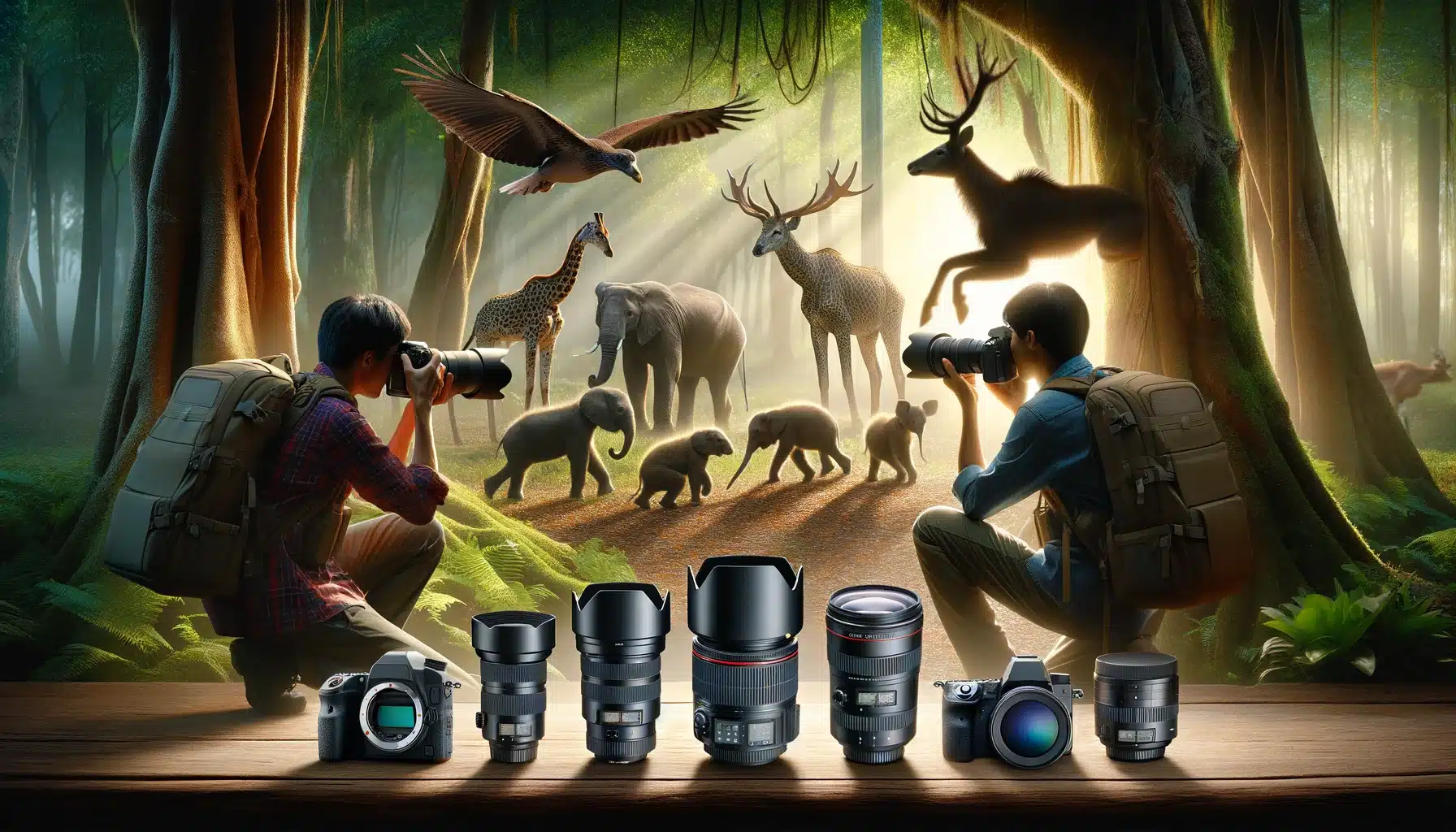
Capturing stunning, beautiful, and professional pictures requires the right camera equipped with essential features. In this guide, we’ll explore key considerations and recommend top cameras tailored for wildlife photography enthusiasts.
Canon EOS-1D X Mark III
● Fast and Accurate Autofocus
● Used by renowned wildlife photographers like Mitsuaki Iwago, the EOS-1D X Mark III excels in capturing fast-moving wildlife with its advanced autofocus system.
● It ensures sharp and detailed images in dynamic scenes.
● Canon EOS-1D offers a mirrorless design, ensuring quick response times.
● The large sensor size captures every detail, giving credit to the vibrant colors and textures of wildlife.
Nikon D850
● High-Resolution Sensor
● Favored by photographers like Thomas Mangelsen, the Nikon D850’s higher-resolution sensor provides exceptional image quality and detail.
● It makes it ideal for capturing intricate wildlife moments with clarity.
● This camera has earned positive reviews for capturing the intricate details of wildlife, making it a top choice for professionals.
● Its mirrorless technology enhances execution, particularly in dynamic and unpredictable natural settings.
Nikon Z9
● Impressive ISO Performance
● Embraced by photographers like Art Wolfe, the Nikon Z9‘s excellent ISO capabilities maintain image quality in poor light conditions often encountered in wildlife photography.
● It makes sure you get clear and vibrant images.
● Its advanced sensor technology is frequently mentioned in reviews for its ability to deliver sharp, detailed images.
● The mirrorless design of the Alpha 1 is a game-changer, providing the speed and agility needed in wildlife photography.
Sony Alpha 1
● Lightning-Fast Autofocus
● Utilized by photographers like Frans Lanting, the Sony Alpha 1‘s advanced autofocus system allows for quick and precise focusing on fast-moving subjects.
● It is crucial for capturing dynamic wildlife moments with accuracy.
● Its advanced sensor technology is frequently mentioned in reviews for its ability to deliver sharp, detailed images.
● The mirrorless design of the Alpha 1 is a game-changer, providing the speed and agility needed in wildlife photography.
Canon EOS R5
● Versatile Autofocus and Image Balancing
● Used by photographers like Ami Vitale, the Canon EOS R5‘s advanced autofocus capabilities and image stabilization ensure sharp and stable images.
● It helps in being suitable for a wide range of wildlife image-capturing scenarios.
● It captures the animals with speed smoothness and clarity without making it blur.
Fujifilm X-T4
● Tiny Design and Advanced Features
● Preferred by photographers seeking portability, the Fujifilm X-T4′s tiny size and advanced features, like fast autofocus and film simulation modes.
● It offers all-round and quality performance in wildlife photography.
● The mirrorless structure , combined with a high-performance sensor, has positive reviews for delivering standard display in the varied scenarios of wildlife image capturing.
Top 10 Mobile Phones with the Best Camera Options
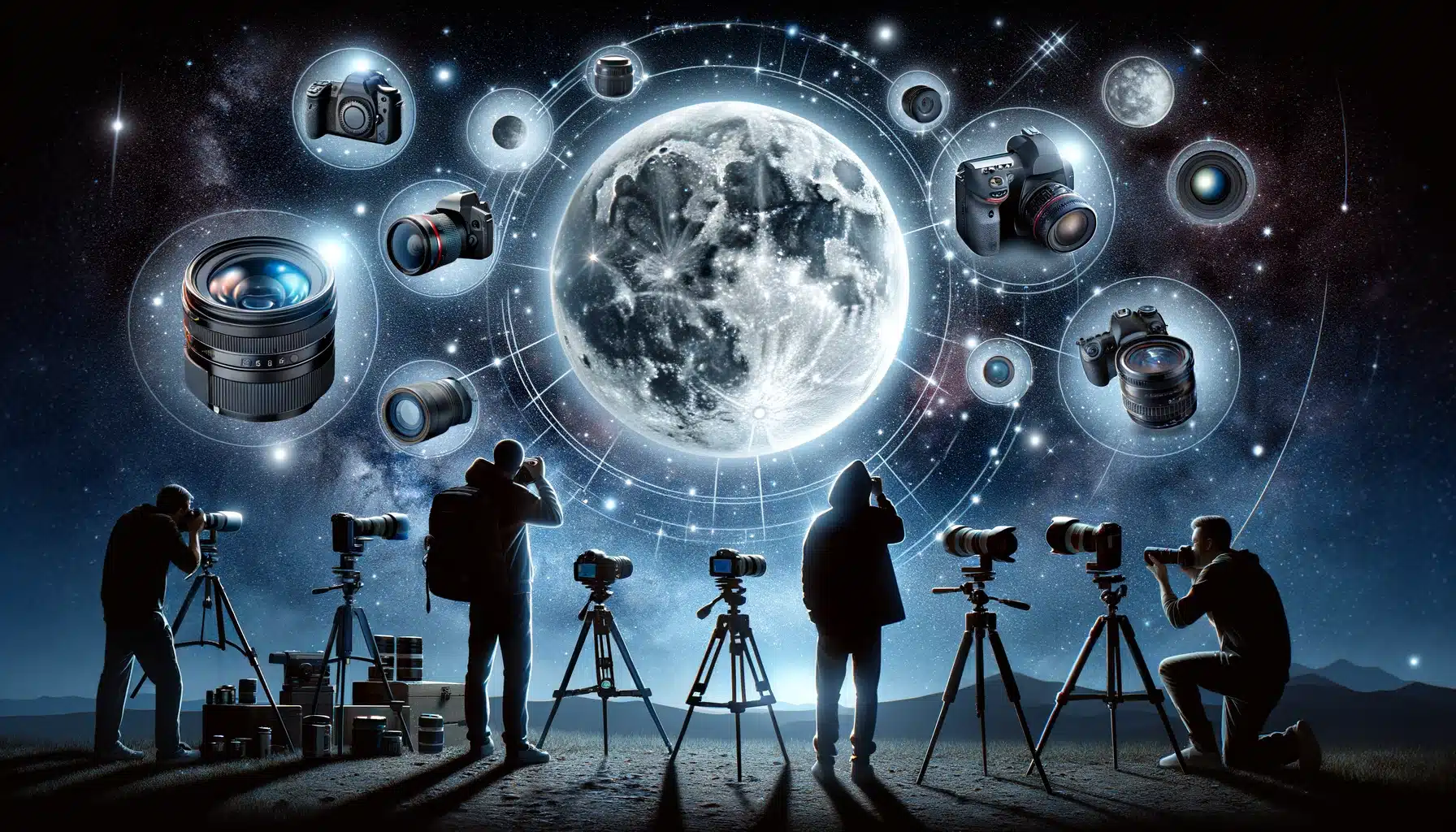
You may be thinking Which camera is the best for photography, especially a mobile camera? In today’s digital age, mobile phones have evolved into powerful photography tools, offering high-performance cameras that rival traditional cameras.
Let’s explore the top 5 mobile phones known for their exceptional camera capabilities.
iPhone 15 Pro Max
The iPhone 15 Pro Max can record videos in super clear quality on all its cameras: 4K resolution at 60fps for the main and selfie cameras, and 30fps for the ultrawide camera. Plus, you can enjoy Apple’s Cinematic mode, capturing stunning videos at 4K resolution at 30fps on both the main and selfie cameras, with Dolby Vision HDR (up to 60fps) too.
These are just a few of the amazing features packed into the iPhone 15 Pro Max. It is the latest and most modern smartphone in the world and it can really take your videography to the whole next level.
Samsung S24 Ultra
Step into a world of stunning photography with the S24 Ultra! Its ultra-wide camera shines in bright light, delivering vivid and detailed shots. And let’s not forget about the telephoto lenses – they bring out the best in zoomed-in scenes, ensuring every detail pops with clarity. Its telephoto capabilities remain top-notch. You’ll still capture breathtaking long-distance shots with impressive detail.
The all-new 50MP 5x zoom telephoto lens. This powerhouse replaces the older 10MP 10x lens, offering unparalleled clarity and precision in your zoomed shots. Get ready to elevate your photography game with the S24 Ultra’s advanced camera setup!
Redmi Note 13 Pro
You will be amazed by the Redmi Note 13 Pro 5G’s camera prowess! Featuring a whopping 200MP main camera with a large sensor and wide aperture, this device takes photography to the next level. With multi-directional PDAF and optical balancing, every shot is sharp and steady.
Zoom in seamlessly with the 2x crop zoom mode, experiencing minimal quality loss and negligible noise. In our experience, this is hands down one of the finest 2x zoom modes available in the midrange segment. Capture moments with unparalleled clarity and detail with the Redmi Note 13 Pro 5G!
iPhone 13 Pro Max
The iPhone 13 Pro Max stands out as a flagship device with a top-notch camera system. The iPhone 13 Pro Max boasts a cutting-edge camera setup that includes a triple-lens system with a wide, ultra-wide, and telephoto lens.
These lenses work harmoniously to capture stunning photos with sharpness and clarity. Moreover, the ProRAW and ProRes capabilities elevate the photography experience to expert levels.
Samsung Galaxy S21 Ultra
The Samsung Galaxy S21 Ultra is another contender in the realm of high-performance cameras in mobile phones. The S21 Ultra features a quad-lens setup with a 108MP main camera, along with ultra-wide, telephoto, and depth-sensing lenses.
This combination allows for versatile shooting options, from wide-angle landscapes to close-up details. The enhanced zoom capabilities and advanced AI processing further enhance the overall photography experience.
Google Pixel 6 Pro
Google’s Pixel 6 Pro has gained recognition for its exceptional camera performance. The Pixel 6 Pro features a dual-lens system with a 50MP main camera and a 12MP ultra-wide camera that answers your query that which camera is the best for photography.
What sets the Pixel series apart is Google’s computational photography prowess, delivering impressive image processing and accurate colors. The integration of AI algorithms ensures that every shot is optimized for quality and detail.
OnePlus 9 Pro
The OnePlus 9 Pro is a flagship device that impresses with its camera capabilities. The OnePlus 9 Pro boasts a triple-camera setup co-developed with Hasselblad, a renowned camera manufacturer.
This collaboration results in natural color reproduction, improved dynamic range, and enhanced details in every shot. The ultra-wide-angle lens and macro mode expand creative possibilities, making the OnePlus 9 Pro a versatile tool for photography enthusiasts.
Xiaomi Mi 11 Ultra
Xiaomi’s Mi 11 Ultra is known for its innovative camera features and capabilities. It is the answer to Which camera is the best for photography? The Mi 11 Ultra features a triple-camera system with a 50MP main camera, a 48MP ultra-wide camera, and a periscope telephoto lens capable of 5x optical zoom.
These lenses, coupled with advanced image processing algorithms, deliver exceptional image quality with accurate colors and fine details. The Mi 11 Ultra’s pro mode and AI enhancements further elevate the photography experience.
Samsung Galaxy Note 20 Ultra
The Samsung Galaxy Note 20 Ultra is renowned for its powerful camera with a 108MP sensor, allowing for incredibly detailed photos. The phone’s laser autofocus and advanced balancing make it easy to shoot quality images even in challenging conditions.
One of the compelling reasons to buy the Note 20 Ultra is its 5x optical zoom and 50x super-resolution zoom, offering unparalleled versatility in mobile picturing. Those who read about its capabilities will find it unmatched in capturing distant subjects clearly and accurately.
Sony Xperia 1 III
The Sony Xperia 1 III stands out in the mobile picture realm, ensuring professional-grade photo standards. Its unique real-time eye autofocus and versatile variable telephoto lens allow for precision and flexibility during a shoot, catering to both casual and serious photographers. The phone’s advanced stabilization capabilities ensure sharp images under various conditions, a key reason many opt to buy it.
Equipped with a 4K HDR OLED display, the Xperia 1 III offers an unparalleled viewing experience, enabling users to read and analyze their photos with exceptional detail and color accuracy. The inclusion of Shooting Pro and Cinema Pro apps enhances the shooting experience, providing manual controls akin to proficient cameras, which appeals to users seeking comprehensive control over their photography and videography tasks.
Understanding DSLR Cameras for Photography
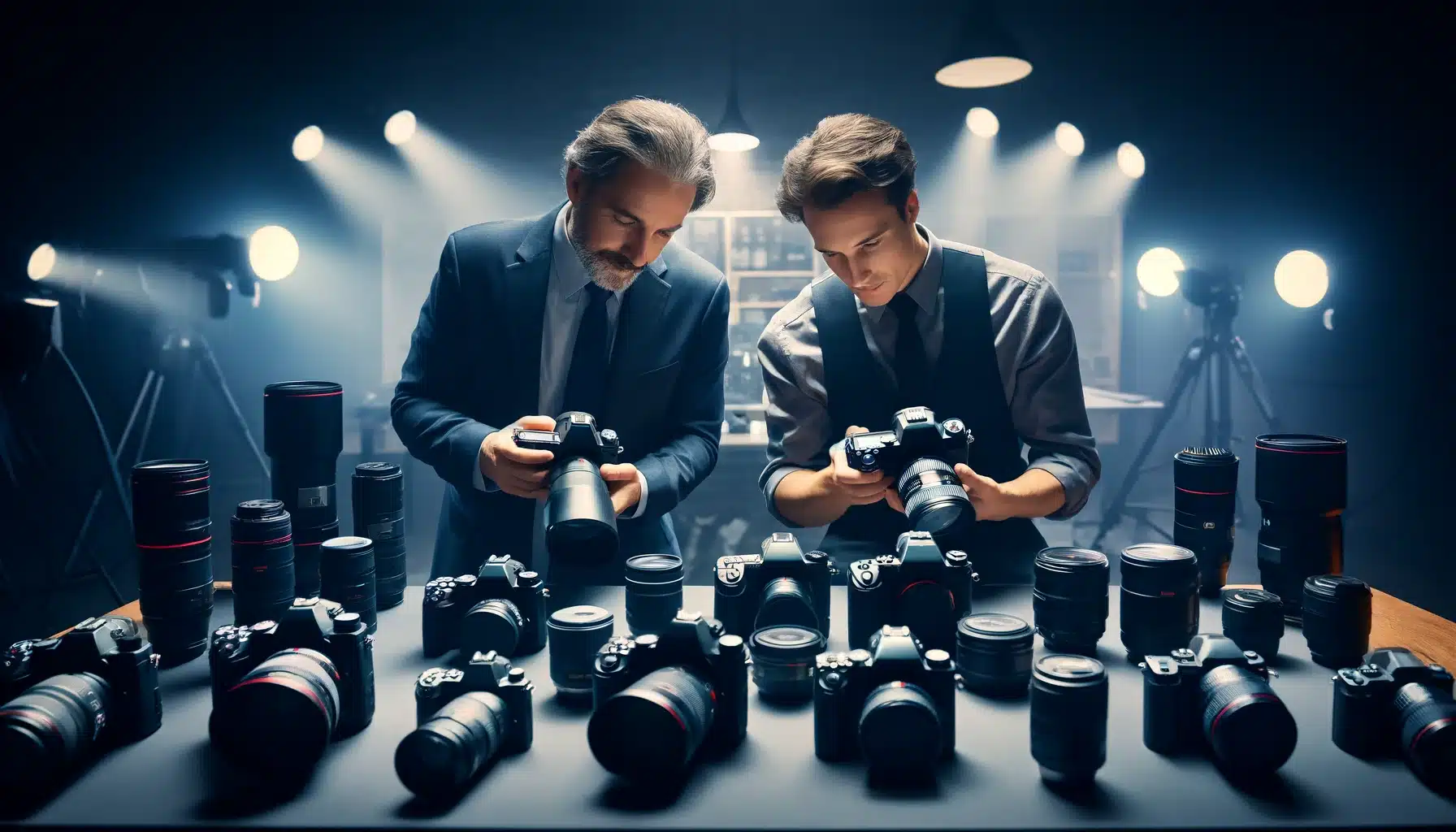
DSLR, short for Digital single-lens reflex optic, is popular among photographers for its all-round and image quality. Which camera is the best? DSLRs come in various models, each offering unique features to suit different photography needs.
Basics of DSLR Cameras
DSLR cameras feature a mirror mechanism that allows photographers to see through the lens via an optical viewfinder. DSLRs are known for their larger sensors compared to compact cameras, resulting in higher image quality and better performance, especially in the poor light.
Key Components
- Lens Interchangeability: One of the significant advantages of DSLR is the ability to change lenses, providing flexibility for different types of photography, from wide-angle landscapes to telephoto wildlife shots. This feature is crucial for photographers looking to adapt to various shooting environments and subjects, enhancing the camera’s versatility and utility.
- Manual Controls: DSLRs offer manual controls for settings like aperture, shutter speed, and ISO, allowing photographers to have precise control over their shots and unleash their creativity. These controls facilitate adjustments in real-time, enabling photographers to respond to changing lighting conditions and motion, capturing moments with greater artistic expression.
Advantages of DSLR Cameras
- Image Quality: DSLRs produce images with excellent detail and color accuracy, making them ideal for professional photography and printing large-format prints. The larger sensors in DSLRs contribute to a broader dynamic range, rendering detailed highlights and shadows.
- Performance in Low Light: The larger sensors in DSLRs enable better performance in low-light conditions, reducing noise and capturing more light for clear and sharp images. This makes DSLRs particularly valuable for event photography, astrophotography, and other scenarios where lighting is challenging.
Considerations When Choosing a DSLR
- Sensor Size: DSLRs come with different sensor sizes, such as full-frame and APS-C sensors. Which camera is the best? Full-frame sensors offer superior image quality but come at a higher cost, while APS-C sensors provide a more budget-friendly option without compromising on quality. The choice between these sensor sizes affects the camera’s field of view and depth of field, influencing the overall look of the images.
- Lens Compatibility: Consider the availability of lenses for the DSLR model you choose, as lens selection plays a crucial role in achieving specific photography goals. Ensure that the camera chessis you select is compatible with a wide range of lenses, especially if you plan to explore different photography styles and techniques.
Common DSLR Brands
- Canon: Known for its extensive lineup of DSLR cameras catering to various skill levels and photography styles. Canon offers models like the EOS Rebel series for beginners and the EOS 5D series for professionals. It provides reliable performance and innovative features like Dual Pixel autofocus and extensive lens ecosystems.
- Canon: Known for its extensive lineup of DSLR cameras catering to various skill levels and photography styles. Canon offers models like the EOS Rebel series for beginners and the EOS 5D series for professionals. It provides reliable performance and innovative features like Dual Pixel autofocus and extensive lens ecosystems.
| Feature | Nikon D850 | Canon EOS 5D Mark IV |
|---|---|---|
| Megapixels | 45.7MP | 30.4MP |
| ISO Range | ISO 64-25600 (expandable to ISO 32-102400) | ISO 100-32000 (expandable to ISO 50-102400) |
| Autofocus Points | 153 | 61 |
| Continuous Shooting Speed | Up to 7 fps (9 fps with battery grip and EN-EL18b battery) | Up to 7 fps |
| Video Recording Resolution | 4K UHD at 30p, 25p, 24p | 4K UHD at 30p, Full HD at 60p |
| Weather Sealing | Yes (extensive weather sealing) | Yes (dust and moisture resistance) |
| Battery Life | Approximately 1840 shots per charge (CIPA) | Approximately 900 shots per charge (CIPA) |
| Image Processor | EXPEED 5 | DIGIC 6+ |
| Viewfinder Coverage | 100% | 100% |
| Weight | 1005g | 800g |
| Image Processor | $2,796 | $2,499 |
Best Compact Cameras for Travel Photography
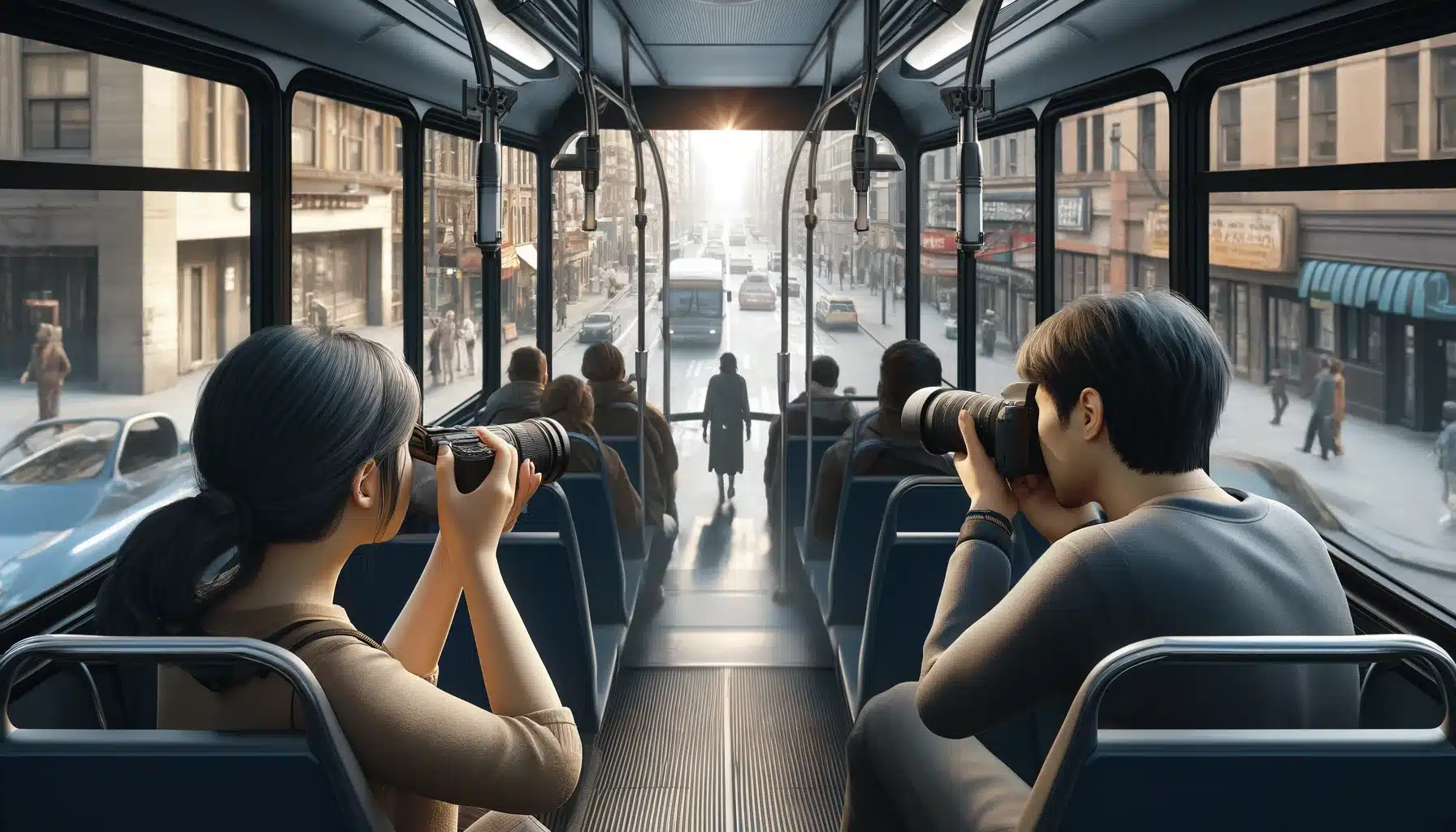
Fujifilm X100V
The Fujifilm X100V is noted for its exceptional image quality and classic design, making it a favorite among street photographers. It features a 23mm f/2.0 prime lens, great for wide-angle shots. Despite its small size, it boasts a 26MP APS-C sensor that outperforms many smartphones and even some interchangeable-lens cameras. Notably, it also supports 4K video recording at 30fps.
Sony Cyber-shot RX10 IV
The Sony Cyber-shot RX10 IV excels with its 1″ sensor and 20 MP resolution. It features robust in-body balancing and can shoot up to 24 fps, making it suitable for capturing fast-moving subjects. The camera is also capable of 4K video recording.
Panasonic Lumix LX100 II
This model is known for its versatility in both stills and video, supported by a Micro Four Thirds sensor and 17MP resolution. The Lumix LX100 II offers a lens range of 24-75mm f/1.7-2.8, ideal for various shooting conditions. It’s a strong contender for those who value a balance between image quality and compactness.
Ricoh GR IIIx
The Ricoh GR IIIx is highly regarded for its portability and image quality, thanks to a 24.2MP APS-C sensor and a 40mm f/2.8 lens. This camera is perfect for street photography, featuring a higher ISO range up to 102,400 for excellent dim light performance. It also includes a fixed touchscreen for easy navigation.
Sony Cyber-shot RX100 VII
This camera is a powerhouse within a small structure, featuring a 20.1 MP 1″ sensor and a versatile 24-200mm zoom lens. It supports 4K video recording and offers fast autofocus, which is crucial for capturing sharp images quickly. The RX100 VII is praised for its performance and pocket-sized portability.
Panasonic Lumix FZ80 / FZ82
The Panasonic Lumix FZ80 / FZ82 is an excellent option for those on a budget, offering a 60x zoom lens and 18.1 MP resolution. It also provides 4K video capabilities and a rapid 30 fps shooting mode, perfect for action shots. This camera is well-suited for travelers who need versatility at a reasonable price.
Comparison Table
| Camera Model | Megapixels | Lens Range | Max Video Resolution (FPS) | Price Estimate |
|---|---|---|---|---|
| Fujifilm X100V | 26.1 MP | 23mm f/2.0 | 4K 30 | $1,399 |
| Sony Cyber-shot RX10 IV | 20 MP | Fixed | 4K 30 | $1,698 |
| Panasonic Lumix LX100 II | 17 MP | 24-75mm f/1.7-2.8 | 4K 24 | $997 |
| Ricoh GR IIIx | 24.2 MP | 40mm f/2.8 | Full HD | $996 |
| Sony Cyber-shot RX100 VII | 20.1 MP | 24-200mm | 4K 30 | $1,298 |
| Panasonic Lumix FZ80 / FZ82 | 18.1 MP | 20-1200mm (60x) | 4K 30 | $399 |
Top 7 Action Cameras for Sports Photography
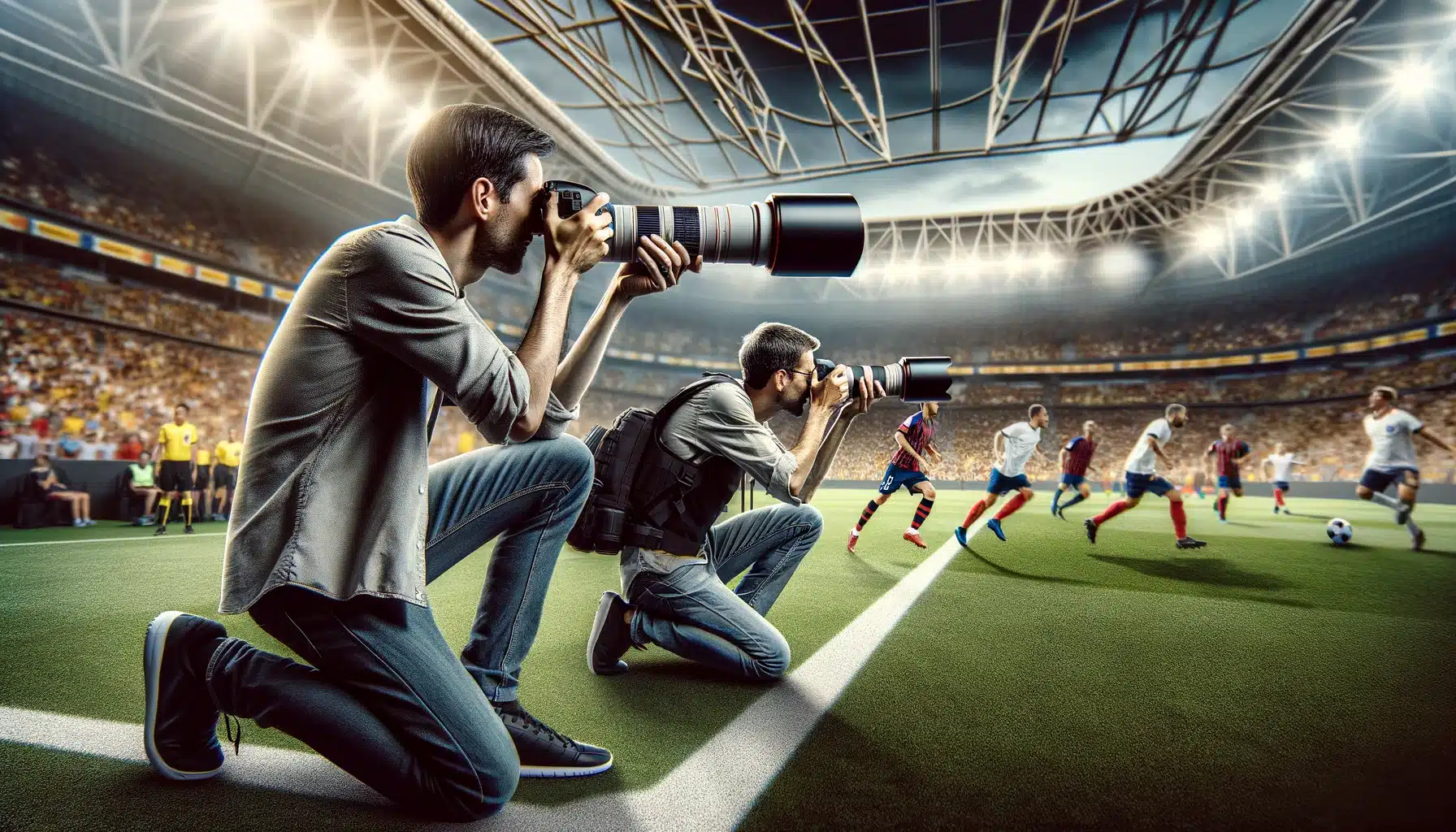
GoPro Hero11 Black
The GoPro Hero11 Black is celebrated for its 5.3K video at 60fps and 27MP photo capabilities, making it a top choice for capturing high-quality action shots. It’s waterproof to 33 feet and includes advanced features like HyperSmooth balancing and horizon leveling for professional-grade footage. Despite some limitations in low-light conditions, its performance is highly praised in action sports environments.
GoPro Hero12 Black
An upgrade to the previous model, the GoPro Hero12 Black offers similar specifications with enhancements in battery life and usability. It maintains the robust design, capable of shooting detailed 5K video and utilizing improved steadying features. This model is also waterproof and continues to support the versatile 8:7 aspect ratio for creative framing.
DJI Osmo Action 3
The DJI Osmo Action 3 stands out for its durability and excellent battery life, capable of operating in extreme temperatures. It records up to 4K 120p video and takes 12MP stills, and is waterproof to 16 meters. Its quick-charging feature and vertical recording mode make it ideal for dynamic sports recording at a competitive price.
Insta360 X3
The Insta360 X3 is unique due to its 360-degree capture capability, offering creative flexibility that traditional action cams can’t match. It shoots 5.7K video and features robust balancing and editing software that enhances post-production workflows. This camera is perfect for sports enthusiasts looking to capture every angle of their adventures.
DJI OSMO Action 4
Ideal for low-light conditions, the DJI OSMO Action 4 shines with its superior sensor that captures detailed footage even in dim settings. It’s waterproof to 59 feet and supports a variety of shooting modes, including timelapse and hyperlapse, adding to its versatility for sports photography.
Insta360 Go 3
The Insta360 Go 3 is noted for its ultra-compact design, making it the smallest camera on this list. Despite its size, it delivers good video quality in formats up to 2.7K. It’s known for its easy-to-use features and magnetic mounting capabilities, which are perfect for quick setup and on-the-go shooting.
Canon EOS 90D
While primarily a DSLR and not a traditional action camera, the Canon EOS 90D is included for those who prefer a more traditional camera setup with action capabilities. It features a 32.5MP APS-C sensor, 10 fps continuous shooting, and 4K video recording, suitable for capturing fast-paced sports.
Best Cameras for Fashion Photography
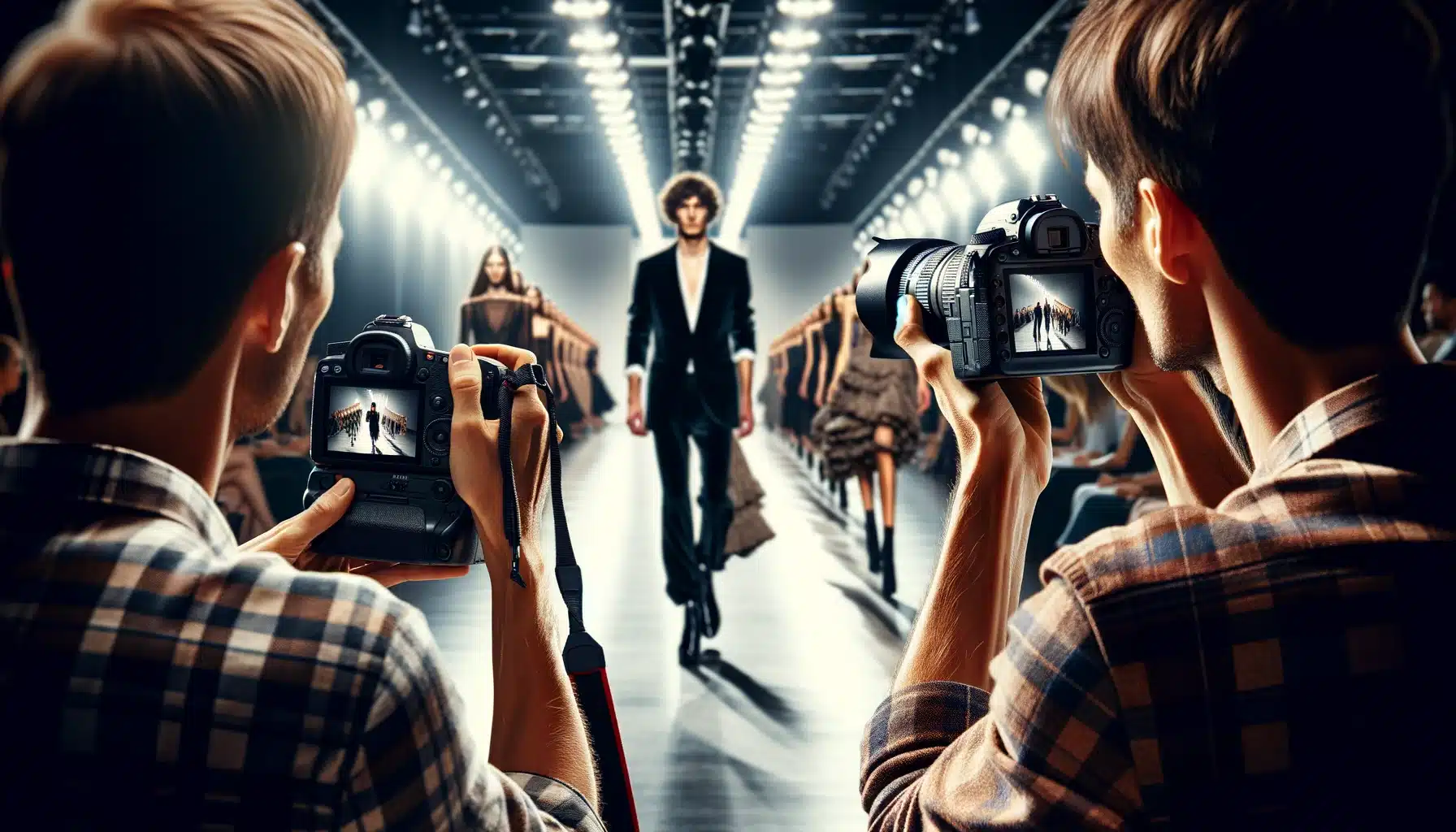
When choosing cameras for fashion photography, photographers should focus on higher resolution, excellent autofocus capabilities, and robust build quality. Here are some of the top cameras for fashion photography:
Canon EOS 5D Mark IV
The Canon EOS 5D Mark IV remains a powerhouse for expert photographers, especially in the fashion industry. It boasts a 30.4-megapixel full-frame CMOS sensor, providing high-resolution images that are crucial for capturing intricate details in fashion photography. The camera supports 4K video recording and offers impressive performance in both low light and high dynamic range situations. Its Dual Pixel CMOS AF technology ensures sharp and reliable autofocus, especially useful during live view and video shooting. Additionally, the built-in WiFi and GPS enhance its usability for on-the-go shoots.
Nikon D3500
The Nikon D3500 is an excellent entry-level camera for fashion photography due to its simplicity and effectiveness. It features a 24.2-megapixel DX-format sensor, which is great for capturing detailed and vibrant images. The camera is known for its user-friendly interface, making it accessible for those new to photography. Its lightweight design makes it ideal for lengthy photoshoots, often required in fashion settings.
Sony a7R III
The Sony a7R III is favored for its high resolution and excellent autofocus capabilities. It features a 42-megapixel full-frame sensor that excels in resolution and image quality, crucial for capturing the fine details in fashion garments. The camera’s BIONZ X image processor enables fast processing speeds, and its advanced 693-point phase-detection autofocus system covers a wide area while ensuring accurate focusing. The a7R III also supports 4K video recording, adding versatility for multimedia fashion projects.
Canon EOS 90D
The Canon EOS 90D stands out with its 32.5-megapixel APS-C sensor, offering higher resolution images suitable for detailed fashion photography. The camera is equipped with a sophisticated autofocus system and can shoot up to 10 frames per second, which is beneficial for capturing dynamic fashion shows. It also features 4K video recording capability and a strong battery life, making it a reliable choice for extended shooting sessions.
Nikon Z6 II
The Nikon Z6 II is well-suited for fashion photography due to its 24.5-megapixel full-frame sensor and fast 14 fps continuous shooting capability. This camera is praised for its versatility and excellent low-light performance, ensuring quality shots under various lighting conditions. The Z6 II also features robust in-body image balancing and dual card slots, offering greater flexibility and reliability during high-stakes fashion shoots.
Unique Selling Points of Top Cameras for Fashion Photography
| Camera Model | Unique Selling Point | Color Science | Connectivity Options | Ideal Use Case |
|---|---|---|---|---|
| Canon EOS 5D Mark IV | Full-frame sensor with excellent color depth | Exceptional | Wi-Fi, GPS, NFC | High-fashion shoots |
| Nikon D3500 | User-friendly for beginners with great battery life | Good | Bluetooth | Entry-level fashion photography |
| Sony a7R III | High resolution with superior autofocus | Outstanding | Wi-Fi, NFC, USB 3.1 | Studio and location shoots |
| Canon EOS 90D | Great for multimedia with strong video capability | Excellent | Wi-Fi, Bluetooth | Hybrid shoots (photo and video) |
| Nikon Z6 II | Fast shooting speeds for dynamic captures | Very Good | Wi-Fi, Bluetooth | Runway and action-heavy fashion events |
| Pentax K-3 Mark III | Rugged build and unique Shake Reduction system | Good | Wi-Fi | Outdoor fashion shoots in challenging conditions |
| Panasonic Lumix G9 | Dual image stabilization for sharp images | Very Good | Wi-Fi, Bluetooth | Dynamic fashion shoots requiring movement |
Debunking Myths About Expensive Cameras: Necessity vs. Skill
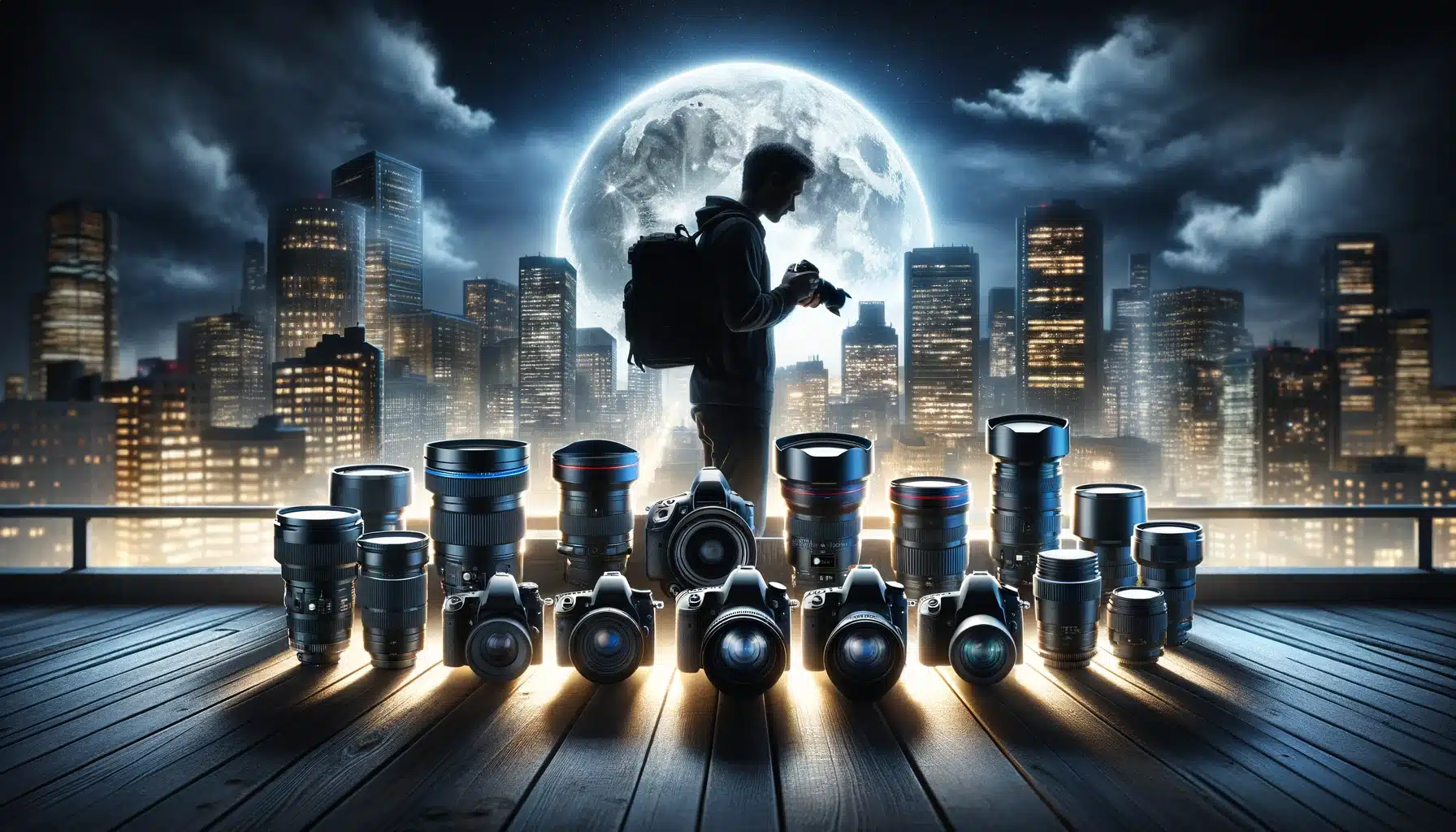
The Myth of Price Equals Quality
Many assume that expensive cameras are essential for capturing top-class photos. However, it’s crucial to avoid the misconception that price directly correlates with the ability to produce stunning images. For instance, photographers like Ansel Adams and Henri Cartier-Bresson created iconic works with equipment that, by today’s standards, would be considered quite basic.
Skill Over Gear
The key to great photos is not the camera’s cost but the photographer’s skill. Understanding light, composition, and camera settings often outweighs the benefits of expensive gear. In real-life examples, photographers have conducted tests where they captured equally compelling photos with both budget cameras. These tests demonstrate that knowledge and experience can avoid the necessity of costly equipment.
Functionality and Practicality
When deciding to buy a camera, consider the features that will genuinely improve your photo shoots. For example, a camera’s balancing feature might be more critical for someone who shoots in motion-intensive environments, like sports or wildlife photography, rather than its price tag. Renowned wildlife photographer Steve Perry often emphasizes the importance of understanding your equipment’s capabilities and limitations over its cost.
The decision to buy an expensive camera should be based on specific needs and how its features will benefit your photography style. Before making a purchase, read reviews, perform your tests, and evaluate what features are necessary for your work. This approach will help you avoid overspending and focus on honing your skills, which is the true essence of capturing great photos.
Real-Life Success Stories
Many successful photographers started with entry-level cameras. The following are real-life examples to prove this point.
Thomas Heaton
Landscape photographer Thomas Heaton frequently shares how he produces stunning images using mid-range cameras. His work underscores an eye for detail and composition, and an understanding of light. His post-processing skills will often lead to great photos, regardless of the camera used. He is an inspiration to many of the young dreamers who are thinking of being a professional photographer but are short on budget.
Vivian Maier
Renowned street photographer Vivian Maier‘s story offers a compelling example of producing extraordinary work with modest equipment. Maier primarily used a Rolleiflex, a medium-format twin-lens reflex camera, which was not the most expensive or advanced camera even during her active years. Despite this, she captured the intricacies of urban life with a depth and quality that rival the work of photographers with far more expensive gear.
How to Use a Camera For Years - A Comprehensive Guide
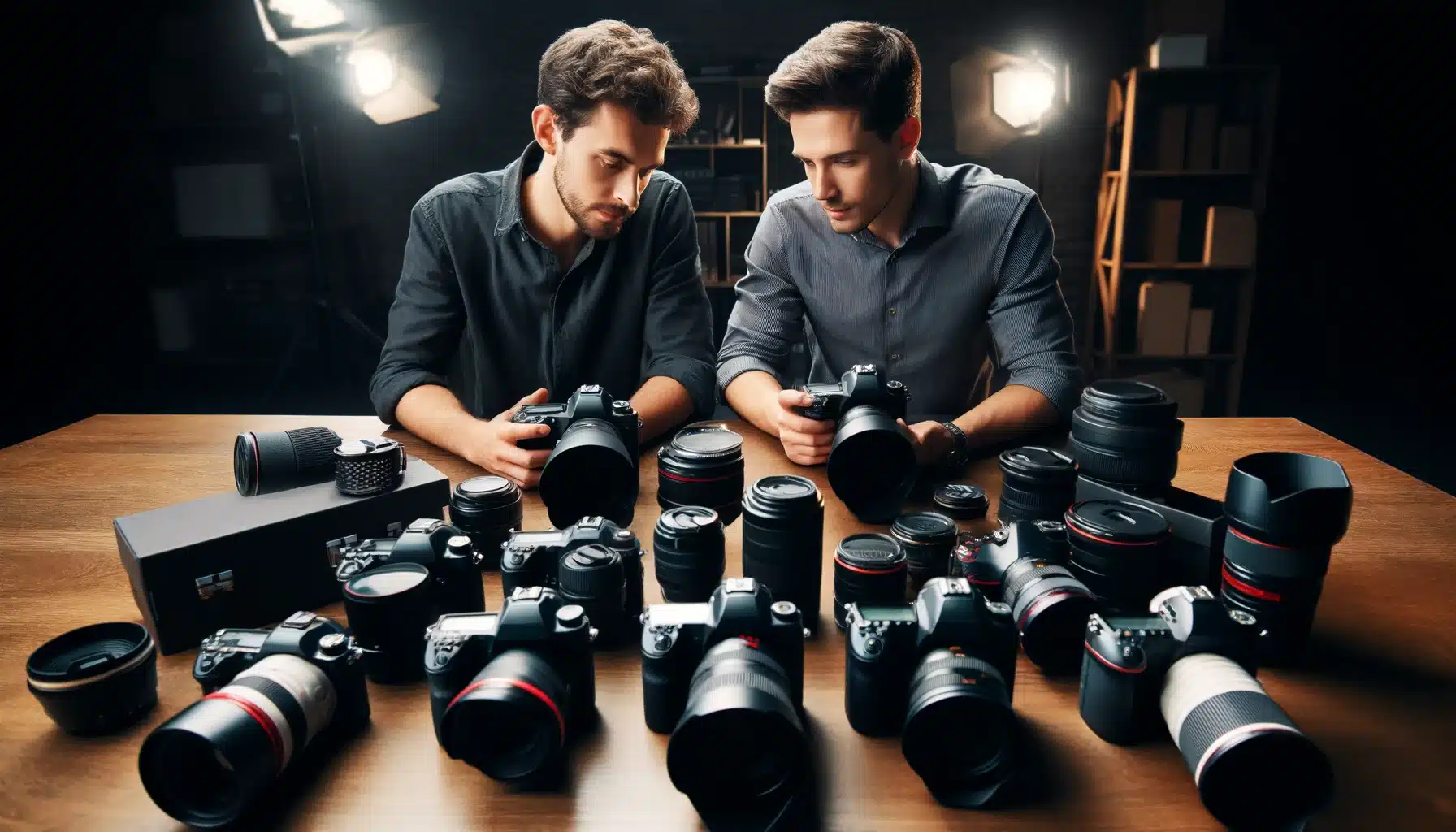
Owning a camera, be it mirrorless or DSLR, is like having a trusty companion on your journey to capture life’s moments through stills and videos. To ensure your camera serves you well for many years, it’s crucial to understand how to maintain and use it properly.
Here’s a guide on how to achieve longevity with your camera, focusing on essential aspects like the screen, type of camera, and maintenance tips.
1. Regular Cleaning
The first step to keeping your camera in good condition for years is regular cleaning. Dust and dirt can accumulate on the screen and optics, affecting your camera’s functionality. Use a soft, dry cloth to gently wipe the screen and chessis. For the glass, use a specialized cleaning solution and optics cloth to avoid scratching. This care will credit your pixel with a longer life and ensure your stills remain clear.
2. Proper Storage
When not in use, store your lenses in a dry, cool place. Extreme temperatures and humidity can harm your camera’s internal components. A padded bag is ideal, as it protects that from bumps and drops. If you own a mirrorless or DSLR camera, remove the battery and memory card and store them separately to avoid potential long-term damage.
3. Battery Care
To prolong your camera’s battery life, never leave it fully discharged or charged for extended periods. Try to keep the battery level between 20% and 80% to maximize its lifespan. If you plan not to use your DSLR/camera for a while, store the battery separately in a cool, dry place.
4. Handling and Usage
Handle your camera with care to avoid accidental drops or impacts. Even a sturdy camera can suffer from mishandling. When carrying it, always use a strap around your neck or wrist to make sure it is safe. Be mindful of the type of environments you’re shooting in; harsh conditions can be detrimental to your lens’s health.
5. Firmware Updates
Regularly check for firmware updates from the manufacturer. These updates can fix bugs, improve existing features, and sometimes even add new functionalities to your camera. Keeping your photographic device updated ensures it operates efficiently and can extend its usable life.
6. Understanding Camera Settings
Learn about your device’s settings and features. Familiarize yourself with the manual mode, exposure settings, and focus options. Knowing how to properly use your optics not only improves your stills but also helps in preventing stress on the mechanics, especially in APS and mirrorless models where incorrect settings can lead to unnecessary wear and tear.
7. Lens Care
If your optic has interchangeable lenses, regularly check them for dust, fungus, or any signs of wear. Proper lens maintenance includes gentle cleaning and ensuring that the connections between the device body and lens are secure. This is particularly important for mirrorless and DSLR, where the lens plays a critical role in capturing images.
8. Use Screen Protectors
The screen on your camera is one of its most vulnerable parts. Using a screen protector can help prevent scratches and damage, maintaining the visibility and functionality of your camera’s display. This is a small investment that can save you from costly repairs or replacements.
9. Invest in Good Accessories
Standard accessories like straps, bags, and protective cases can extend your device’s life. They provide protection and support, reducing the risk of damage from drops or environmental factors. Select accessories that are compatible with your device type and fit well, offering secure and comfortable handling.
10. Avoid Overexposure to Elements
Lastly, avoid exposing your camera to harsh conditions like rain, snow, or sand unless it is specifically designed to handle such elements. Even weather-sealed cameras should be treated with care and protected from extreme conditions.
Rain and moisture can seep into the camera housing and lens, leading to potential water damage that affects the internal circuitry and can cause corrosion. To prevent this, use rain covers or protective gear when shooting in wet conditions, and always dry your camera thoroughly after exposure.
For snowy environments, the concern extends to the rapid temperature changes that can cause condensation within the camera structure and lens, potentially leading to fungal growth or electronic failure.
Innovations in Photographic Technology: Past, Present, and Future
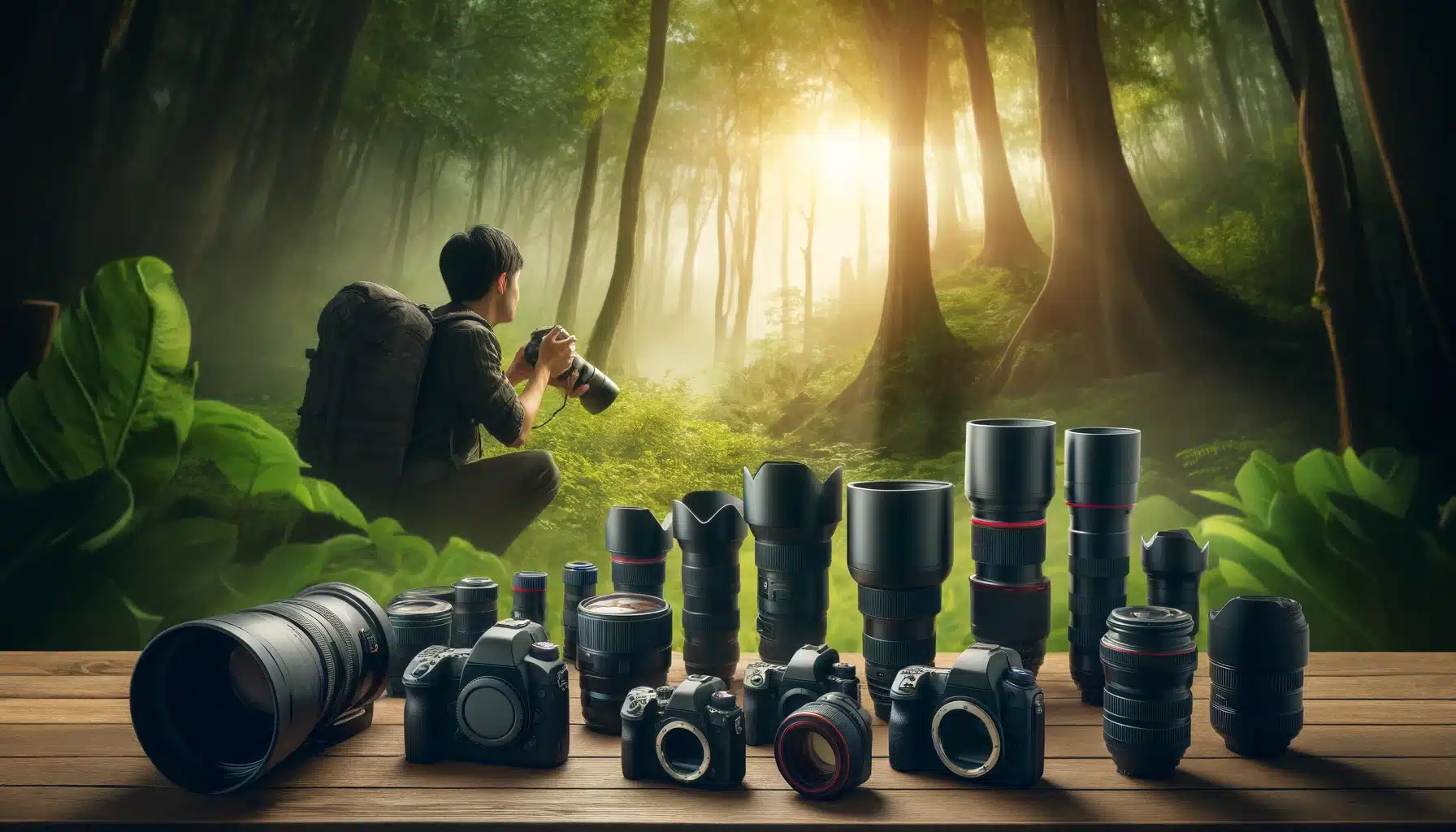
Historical Milestones in Photographic Device Development
The journey of photographic devices began with rudimentary creations like the pinhole viewer. Then it evolved to the more sophisticated SLR (single-lens reflex) systems pioneered by industry stalwarts such as Nikon and Canon. These early models established benchmarks with their sturdy body and mechanical precision, enabling users to capture images with remarkable clarity and speed.
The Digital Revolution and Rise of Mirrorless Systems
With the advent of the digital era, companies like Sony and Fujifilm significantly contributed to the introduction of mirrorless devices. These systems merged the small design of point-and-shoot devices with the advanced features of DSLRs, offering a lightweight structure without compromising on functionality. This period marked a transition towards more portable and user-friendly devices, with improved screen interfaces enhancing the user experience.
Future Trends and Optimal Camera Selection
Looking forward, the evolution of mirrorless systems is expected to continue, yielding even mor energy-efficient models. Artificial intelligence (AI) is likely to become integral to these devices, offering sophisticated capabilities for capturing and processing images. Moreover, the industry might lean towards sustainability, crafting tools that are both durable and eco-friendly.
The Enduring Legacy of Major Photographic Brands
Throughout these technological advancements, the contributions of Nikon, Canon, Sony, and Fujifilm have been pivotal. Each brand has consistently innovated and adapted, cementing its status in photographic history. Their continued dedication to enhancement suggests a future where these tools evolve further, integrating more seamlessly into our lives and offering even greater capabilities.
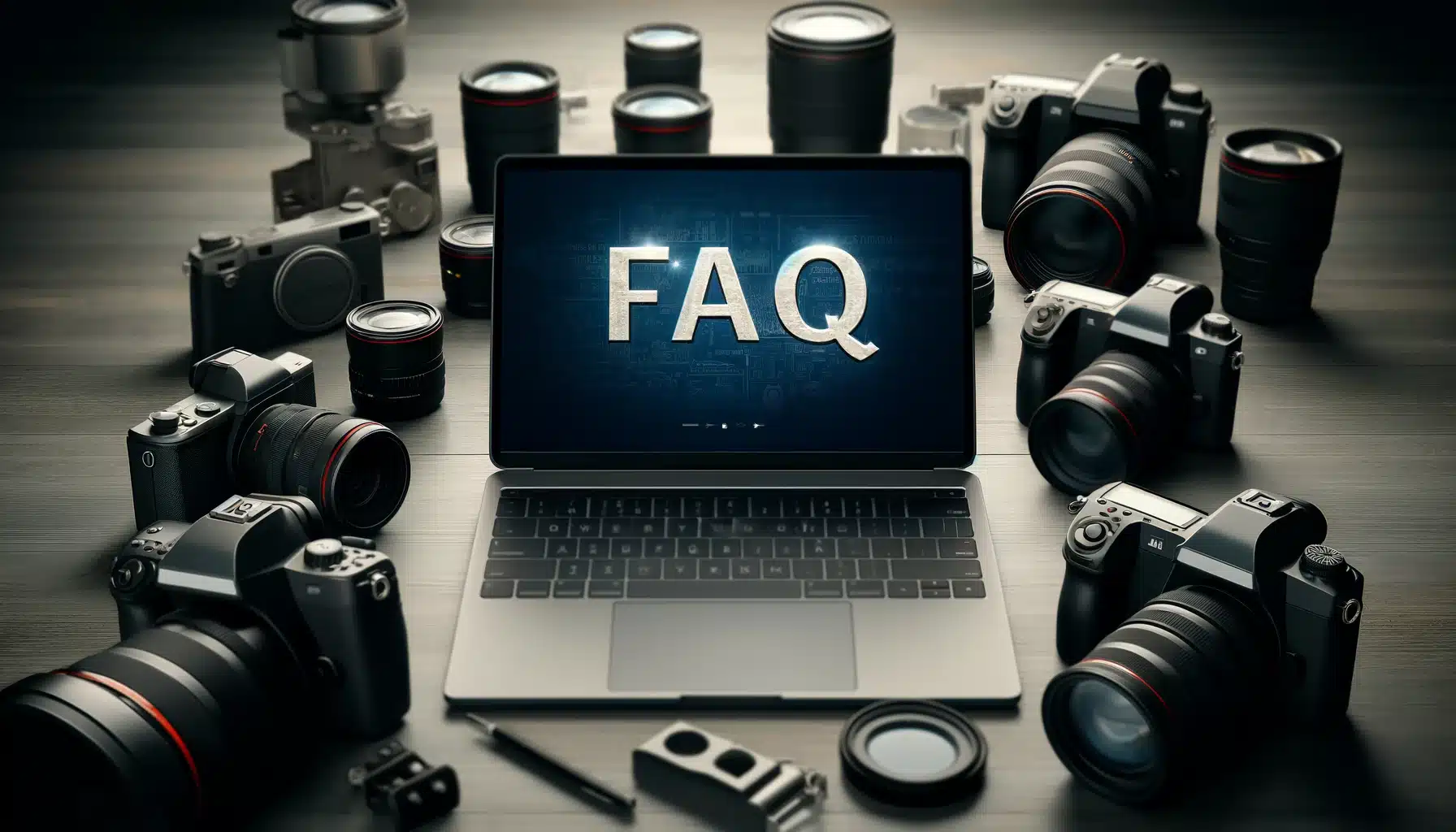
FAQs About the Best Camera Options
What is the No 1 camera?
It’s difficult to say which camera is number one because it depends on what you need it for. Many people like different cameras for different reasons. Some popular cameras are Canon EOS R5, Sony Alpha A7S III, and Nikon Z7 II.
Which is most powerful camera?
There isn’t just one best camera of all time because different cameras have excelled in different ways over the years. Some iconic cameras like the Nikon F3, Canon EOS 5D Mark IV, and Leica M series are highly regarded for their historical significance and performance.
Which camera has the best quality?
Cameras with impressive picture quality often have large sensors and advanced image processing capabilities. Some cameras known for their exceptional picture quality include the Sony A7R IV, Canon EOS 5DS R, and Nikon D850. These cameras offer stunning detail and clarity in images.
Which is the No 1 camera brand in the world?
The best camera brand can vary depending on personal preference and specific needs. However, some of the top camera brands known for producing high-quality cameras include Canon, Nikon, Sony, Fujifilm, and Panasonic. Each brand offers a range of cameras tailored to different photography styles and budgets.
Conclusion - Which Camera Should I Choose?
Navigating the world of cameras requires a thoughtful approach that considers factors such as your photography style, budget, and specific needs. I hope today’s review about different cameras will help a lot in choosing the right camera for you. Whether you’re seeking the best camera for wildlife photography or exploring top-rated options for YouTube content creation, understanding the key components and advantages of different camera types is crucial.
To further enhance your photography journey and gain expert insights into choosing the best camera and mastering editing tools, I invite you to explore our comprehensive courses at Lightroom-Photoshop-Tutorials.com.
Have a nice photoshoot!


